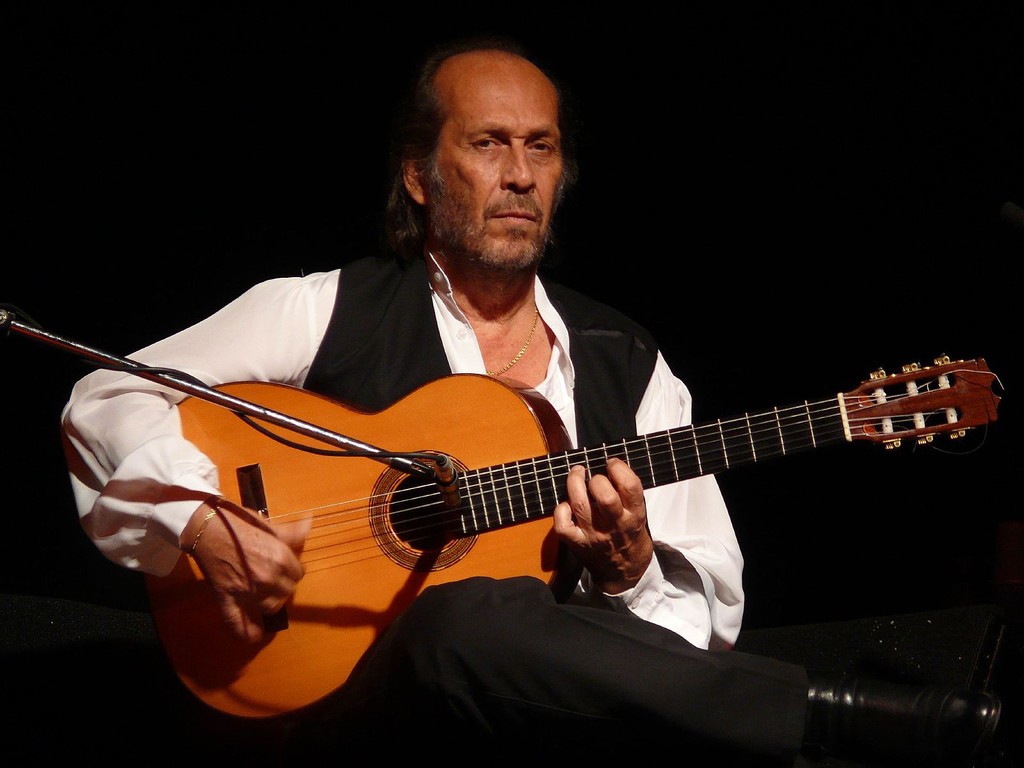 He is not a son, but he is a grandson of the land and he has never forgotten his Algarvian origins, despite having been one of the greatest names in Spanish music in the XNUMXth century.
He is not a son, but he is a grandson of the land and he has never forgotten his Algarvian origins, despite having been one of the greatest names in Spanish music in the XNUMXth century.
Castro Marim City Council is preparing to launch the construction work of Largo Paco de Lucia in Monte Francisco, one of the many projects of the current municipal executive that aim to make the municipality more attractive, from a tourist point of view.
Monte Francisco is the place where the mother of the late artist, Lúcia Gomes, was born and lived, where Paco de Lucia regularly returned and where his family still live. In 1987, he gave the name «Castro Marín» to one of his records.
“We are now going to get funding and launch this work. When Largo is completed, it will be a local pilgrimage for Spanish tourists, who will feel Paco de Lucia in that place. It will have music and a sculpture, among other elements. We are talking about the place where the musician's mother lived», illustrated the mayor of Castro Marim, in an interview with Sul Informação.
This project, recently completed and launched by Francisco Amaral, who took over the reins of the municipality in 2013, will also be a way of honoring Paco de Lucia, taking into account that the musician has always made a point of publicly assuming his castro ancestry -Marinean.
The Spanish guitar virtuoso came to perform in this municipality in 2005, a concert that attracted people from both sides of the border and in which Paco de Lucia referred to the Portuguese audience as “cousins”.
“We have done everything possible to capitalize on a market that is very close here, which is the Spanish market, and we are already succeeding. Both at the Caracol Festival and at the festival of Nossa Senhora dos Mártires, we make a point of having a Spanish night, with artists from the neighboring country», said Francisco Amaral.
The project in Monte Francisco is another part of Castro Marim's strategy to become more attractive to tourists, all year round.
“We had several projects carried out, including bike paths, motorhome parks and the river beach of Odeleite. We also installed a berth in the village of Castro Marim, which had its back to Rio», enumerated Francisco Amaral.
On the other hand, there was a renewed commitment to the coast of this county, namely in its renowned beaches. «We have streamlined our beaches and we recovered the Blue Flag, something that had been lost a decade ago», recalled the mayor of Castro Marim.
About Paco de Lucia:
Paco de Lucia is the artistic pseudonym of Francisco Sánchez Gomes. The youngest son of a humble family, he was born on December 21, 1947 in Algeciras, a city in the province of Cádiz.
Paco is the name usually given in Spain to those called Francisco. As many Pacos lived in the neighborhood where he lived, to differentiate him they started calling him “Paco, o de Lucia”, the name of his Portuguese mother, born in Castro Marim.
It was with his father, the flamenco guitarist António Sánchez, and his brother Ramón, that he learned to play the guitar. His main influences were flamenco guitarists Nino Ricardo, Miguel Borrull, Mario Escudero and Sabicas.
In 1958, at just 11 years of age, he made his first public appearance on Radio Algeciras and, the following year, he received a special prize at a flamenco competition in Jerez de la Frontera.
As a result of this success, he joined José Greco's troupe in 1961, with which he toured. Between 1968 and 1977, he recorded ten albums with Camarón de la Isla, another innovative new flamenco musician.
Recognized around the world as one of the best composers and guitarists, Paco de Lucia led the flamenco revolution in recent decades.
Paco de Lucia took the flamenco tradition and reinvented it, opening it up to incursions into musical genres such as jazz or bossa-nova.
And if one hand was attached to tradition, where the essence and message of flamenco resides, the other touched innovation through its luminous music.
At 58 years old and with more than 30 recorded albums, the first of which was released in 1967, the brilliant Spanish guitarist was distinguished with the Príncipe das Astúrias Prize for the Arts.
He died in February 2014.


















Comments